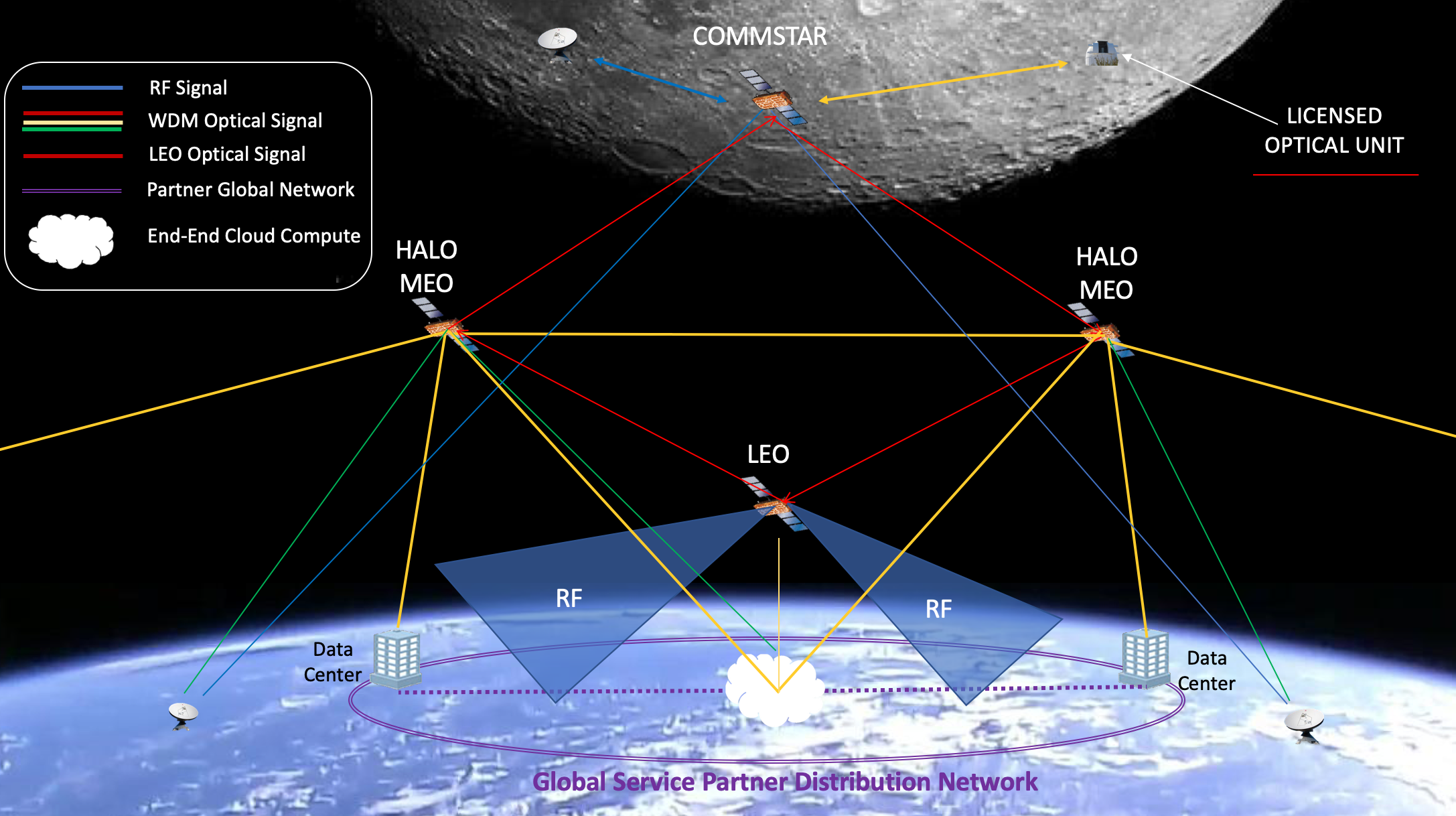The Ultimate Edge: Building a Lunar Network
The landers are limited in providing more robust or alternative communications capabilities, such as laser comms, or technically free-space optical communications (“FSO”), due to the inherent limits of their physical infrastructure and space, weight, and power (SWaP) budgets. SWaP is often a matter of cost—calculated in transport price per pound to the lunar surface—and performance, determined by the space and power of the lander itself. Every functionality onboard a lander consumes SWaP. SWaP budgets are always tight, and trades affect results in either lander performance or payload capabilities.
Direct communications to Earth often fall into the “good enough for mission” category, for instance being low bandwidth and low speed instead of a more robust resource for all onboard. This is because robustness of any function on a spacecraft, especially a lander, costs SWaP. And, because their landing sites are also quite diverse on the lunar surface, and in most cases beyond direct line of sight of each other, point-to-point communications between them as a network is impossible without a relay of some sort. So, if one balances SWaP and limited networks in view on the lunar surface, the best alternative would be a relay satellite. Such a satellite should have significantly more SWaP dedicated to a single purpose—here, relay services—relieving the lander or smaller orbiters circling the Moon of the heavy burden of trying to signal the 240,000 miles direct to the Earth (DTE) with its own limited capabilities.
Figure 1: The Commstar Network
(click to enlarge)
A relay satellite by 2023
In June 2020, CommStar Space Communications announced its intention to deploy an advanced proprietary data relay satellite (“CommStar-1”) to be located between the Earth and the Moon by 2023. Serving as an advanced network access point located in the Cislunar service area, CommStar-1 will be capable of receiving and relaying both optical and radio frequency communications between the Moon and the Earth. CommStar-1 will provide “always available, always-on” advanced data services over the approximately 240,000-mile distance between the Earth and Moon but will be situated closer to the Moon at a distance of 40,000 miles.
CommStar-1’s service payload will serve as a hybrid system for both radio frequency and optical (laser) communications. CommStar-1 will be a larger communications platform than anything currently planned for location in Cislunar, on the lunar surface, or in orbit around the Moon, with significant space, weight, and power (SWaP) dedicated for enhanced relay data transmission. This will enable higher-speed connectivity and robust bandwidth capacity without the critical trade-offs of costly “SWaP” dedicated solely for ultra-long-haul communications.



















